Monasteries in Tibet
There are almost too many monasteries to count throughout Tibet. Every monastery represents a school of Tibetan Buddhism and reveres a respective teacher or Lama associated with that school of thought and practice. Here we aim to include monasteries of particular significance in Tibet’s past and present from the different regions of Central, Kham, and Amdo.
Following is a list of Top 10 Most Important Monasteries in Tibet, including the spiritual center Jokhang Temple, ancestral temple of Gelug – Ganden Monastery, official seat of Panchen Lamas – Tashilhunpo Monastery, magnificent Palcho Monastery, etc.
(1.)Jokhang Temple – Religious center of Tibet
(2.)Ganden Monastery – Holy Monastery of Gelugpa
(3.)Drepung Monastery – Once the Largest Monastery
(4.)Sera Monastery – Famous for Tibetan Buddhism Debating
(5.)Tashilhunpo Monastery – Home of Panchen Lamas
(6.)Palcho Monastery – Synthesis of Tibetan Culture
(7.)Sakya Monastery – The Origin of Sakyapa Sect
(8.)Samye Monastery – The First Monastery in Tibet
(9.)Rongbuk Monastery – The highest monastery in the world
(10.)Reting Monastery – Seat of Reting Rinpoche
Jokhang Temple – Religious center of Tibet
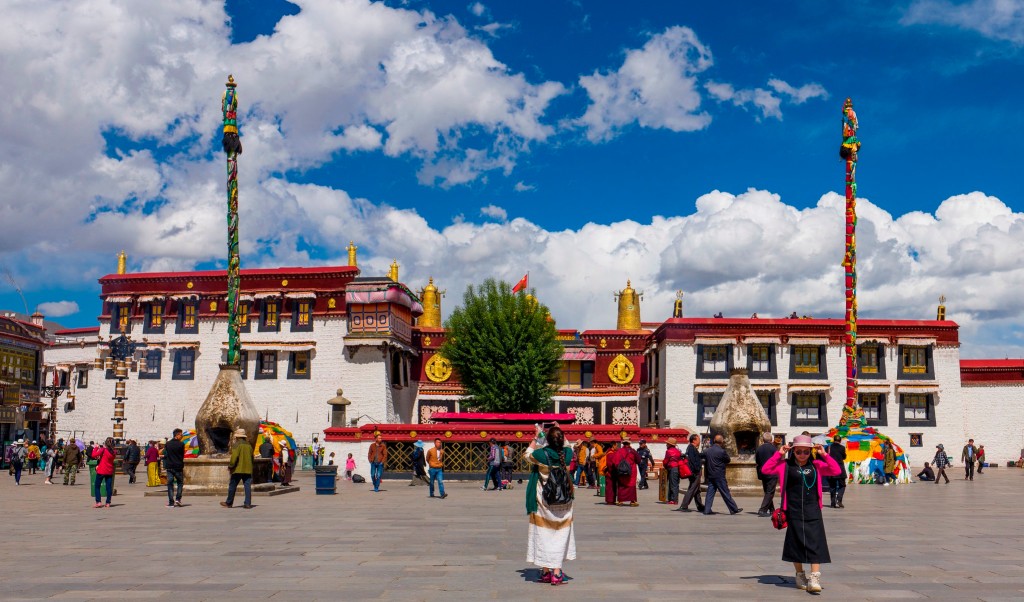
Jokhang Temple (or Jokhang Monastery) is the spiritual center of Tibet and the holiest destination for all Tibetan pilgrims. It is is listed in the World Cultural Heritages with Potala Palace and Norbulingka. Situated at the heart of the old town of Lhasa and surrounded by Barkhor Street, this 4 storied building, built in the 7th century by Songtsan Gambo, with roofs covered with gilded bronze tiles, demonstrates a combination of the architectural style of Han, Tibetan, India and Nepal, as well as a Mandala world outlook of Buddhism. It was originally called the ‘Tsuklakang’ (Tsulag Khang) – ‘House of Religious Science’ or ‘House of Wisdom’ during the Bon period of Tibet, which is referred to geomancy, astrology, and divination of Bon. Today it is more commonly known as the Jokhang, which means the ‘House of the Buddha’. Visiting Jokhang Temple for a real discovery tour in the mysterious and sacred land, you can get close to the religious part of Tibet and experience the devotion of Tibetans.
Ganden Monastery – Holy Monastery of Gelugpa
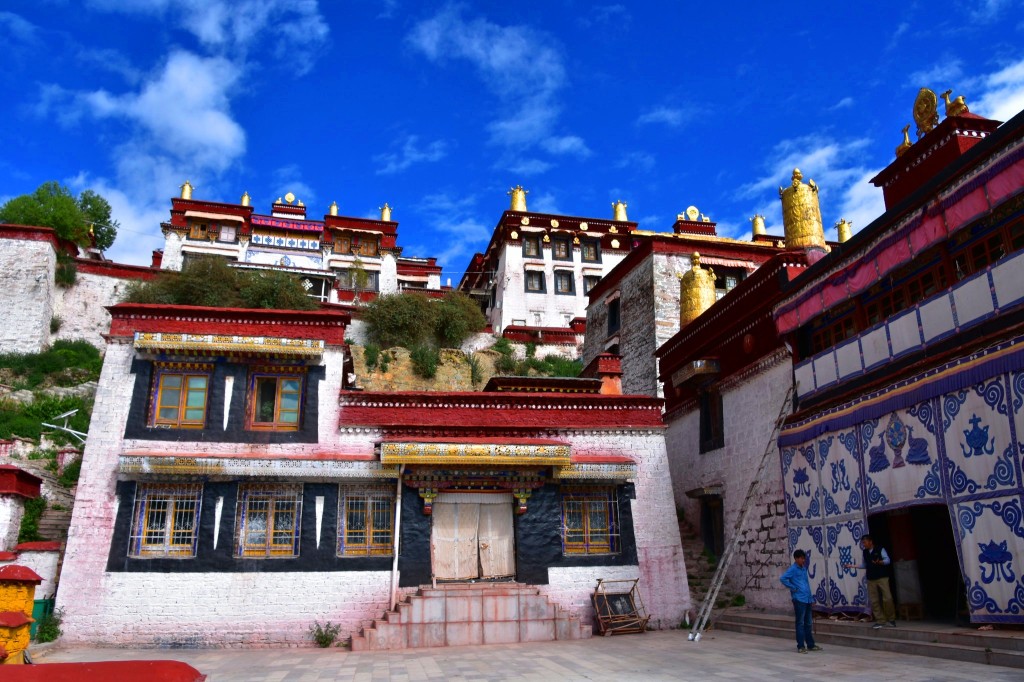
Ganden Monastery is one of the earliest and largest Buddhist monasteries in Tibet. With over 600 years of history for building in 1409 by Tsongkhapa, the founder of the Gelug Sect, it stands atop of the six famous temples of Gelugpa, and also known as one of the Three Great Temples, together with the Sera Monastery and the Drepung Monastery. In the meaning of happiness and contentedness in Tibetan, Ganden Monastery is the main dwelling of successive Gelug abbots and their tombs were built into pagodas for over 90 numbers. With an orderly architectural layout of standing Buddha halls, towering roofs, splendid stupas, Ganden Monastery is arranged well with vivid colors of black windows, white walls and the golden roofs, like a castle under the heaven. Besides, the kinds of architectural buildings and a large quantity of cultural relics and handicrafts are worth visiting. Along the winding twisty road up, you can appreciate the authentic holy land under the blue sky.
Drepung Monastery – Once the Largest Monastery
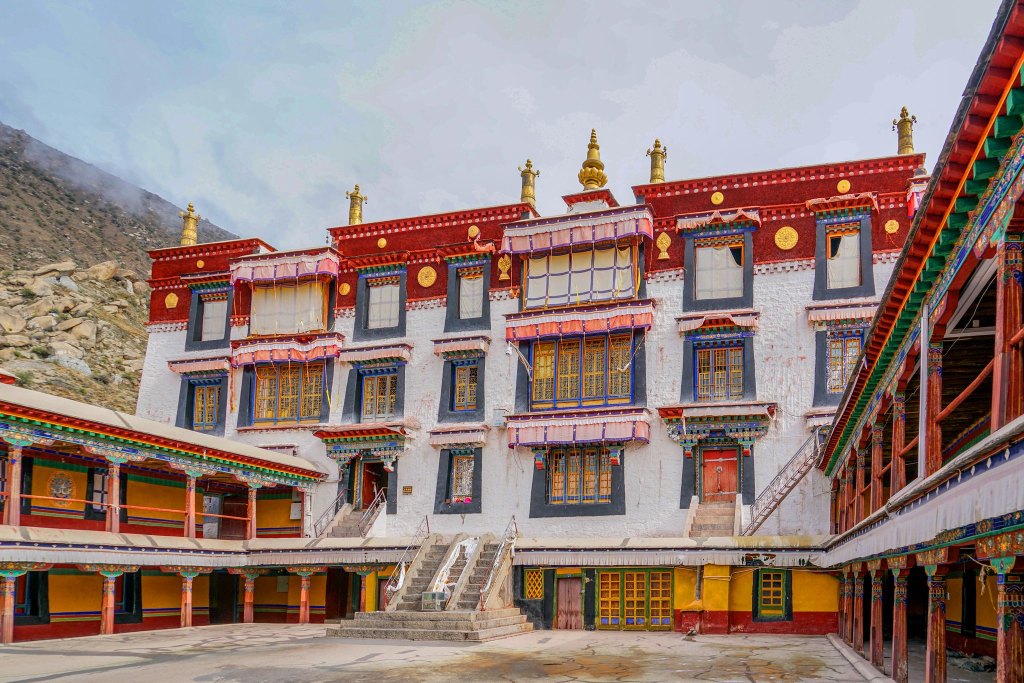
Drepung Monastery is one of the three great Gelukpa monasteries, along with Sera Monastery and Ganden Monastery. As the largest monastery of Tibet constructed in 1416, there was a totally 10,000 monks once lived here in the peak times, Drepung Monastery plays an important role in Tibet Buddhism. Located on the Gambo Utse Mountain, it has magnificent complex of white buildings dotted around the hillside. The Ganden Potrang, once the residence for Dalai Lamas (1-5th) before the 5th Dalai Lama built Potala Palace, is the most featured historical building here, which makes Drepung Monastery enjoys the highest status among Tibet monasteries. Besides, the famous Shoton Festival is first to celebrate here, also called Drepung Shoton Festival, given rise to extensive attention and influence among Tibetans. Enjoy your exploratory tour to the most popular monastery to discover the charm of devoted belief.
Sera Monastery – Famous for Tibetan Buddhism Debating
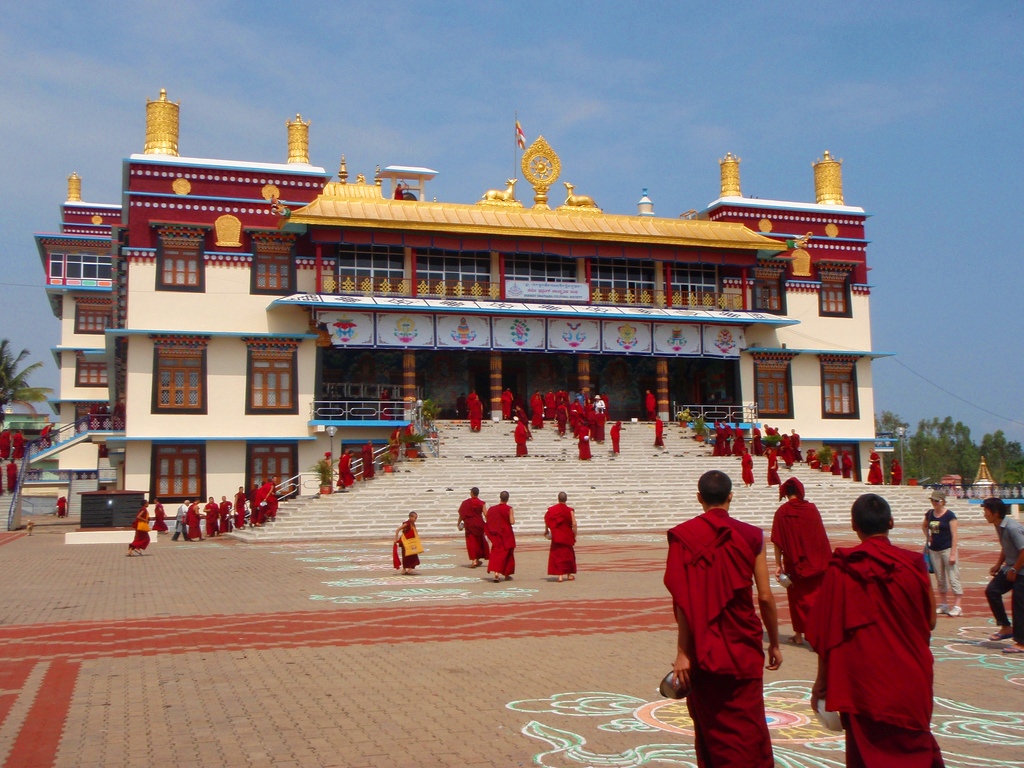
Sera Monastery as one of the three temples in Lhasa, together with Drepung Monastery and Ganden Monastery, is a representative of Gelug temples, located on the northern suburb of Lhasa. Built in 1419 by one of the Tsongkhapa’s disciples, it is a complex of structures with the Great Assembly Hall, the dwellings in the eastern side and three colleges in the western side. Setting against a backdrop of mountains, it makes for a good photographic experience by climbing the halfway mountain behind. Noted for its debate session, Sera Monastery stored many precious relics, arts, scriptures for monks to learn Buddhist knowledge. What’s more, the daily Buddhism debating is a truly spiritual “class” to practice and test their mastery of Buddhism. As the top highlight in Sera Monastery, the debate is open to public for tourists to enjoy the charm of Buddhism and find some enlightenment, which can’t be missed out.
Tashilhunpo Monastery – Home of Panchen Lamas
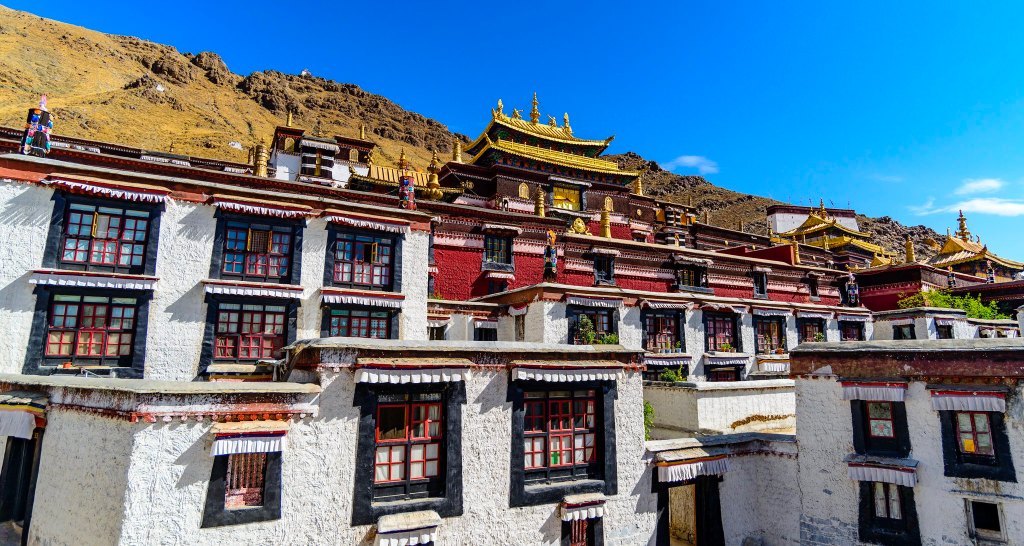
Tashilhunpo Monastery as one of the six Gelug monasteries is the seat of successive Panchen Lamas. Founded by the First Dalai Lama in 1447, it is an important monastery in Tibetan history and culture. Located at the foot of Drolmari, western side of Shigatse, the second largest city in Tibet, it means “all fortune and happiness gathered here” or “heap of glory” in Tibetan. Covering an area of nearly 150,000 square meters, the monastery is the largest temple in Shigatse, which has about 57 halls and 3600 rooms. Among them, the Coqen Hall can hold 2000 people chanting at the same time. Featuring an interesting sprawling amalgam of traditional Tibetan monastic style, those halls, chapels and other structures are connected by precipitous steps and narrow cobblestone alleys. The interplay between the golden roofs and the white, red and black exterior walls creates a striking composition.
Palcho Monastery – Synthesis of Tibetan Culture
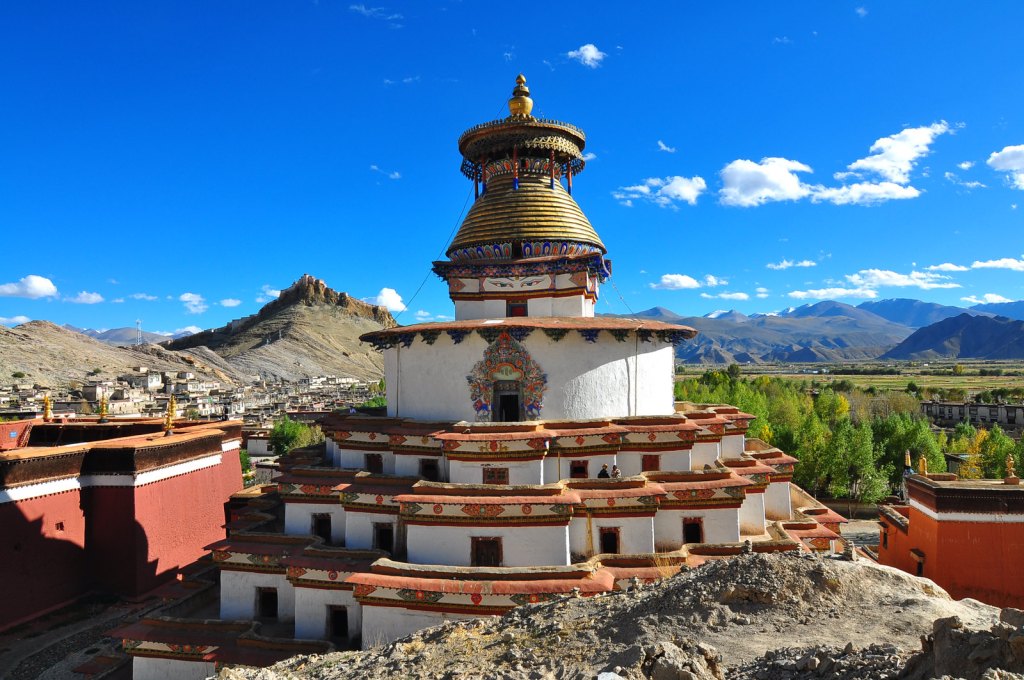
Palcho Monastery, also called Palkhor Monastery is a typical combined building with stupa and temple, and quite different from other Tibetan monasteries in more aspects. By housing three sects of Sakyapa, Kadampa and Gelugpa together, it has a hard-won lenient tolerance among the Tibetan sects to balance them well. Therefore, the design and layout of Palhor Monastery is a synthesis of the three sects to combine different structural Zhacangs (room for monks), enshrined deities and more integrated Tibetan Buddhist Culture.What’s more, the Myriad Buddha Stupa (or Palcho Kumbum) as a powerful Buddhist symbol and a calling card, making Palcho Monastery becomes more attractive and special.Whether you come for Tibetan architecture art or the deep Tibetan religious culture, Palcho Monastery with different Buddhist sculptures, religion murals, monastery architectures can give you more than just you want to explore.
Sakya Monastery – The Origin of Sakyapa Sect
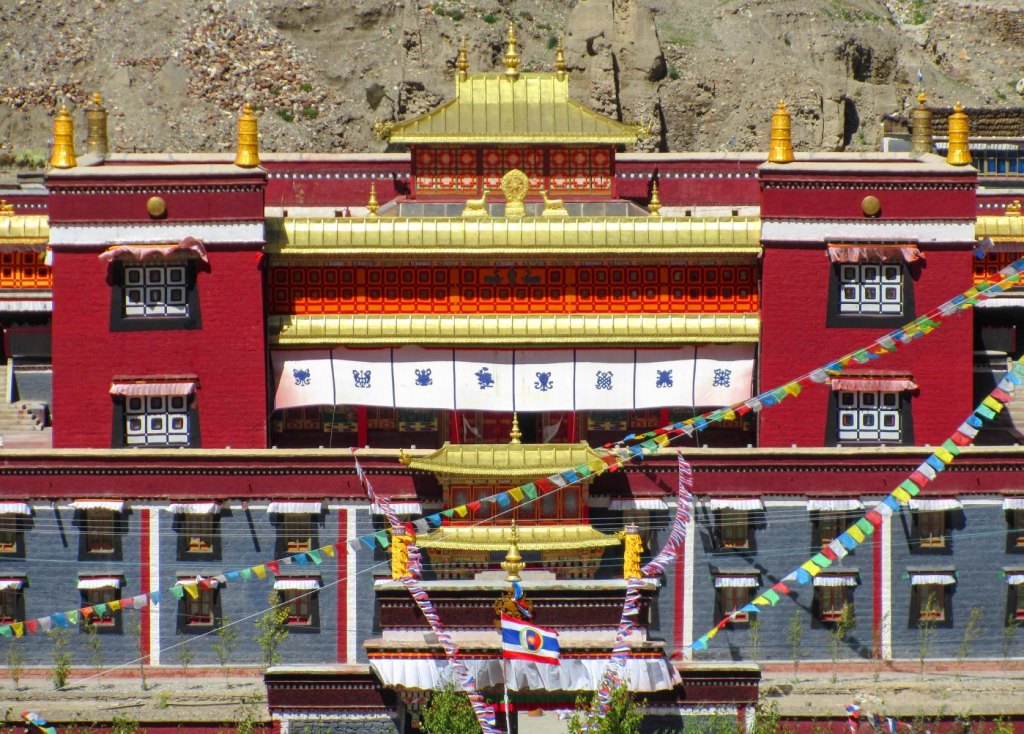
Sakya Monastery is the principal monastery of the Sakyapa Sect of Tibetan Buddhism, located in Sakya County, about 160 kilometers southwest of Shigatse, on the road to Tingri in Tibet. Built in 1073 by Khon Khonchong Gyalpo, on the hill side with gray earth surrounded, it means the “Grey Soil” in Tibetan. Divided by river, this monastery is consists of the northern part (in the hillside) and the southern part (lies in the valley). Different from other monasteries in Lhasa, its wall painted in red, white and grey strips, which represent Manjushri, Avalokiteshvara and Vajrapani, as a special architecture to distinguish from other Buddhist schools, which is easily to find out from a distance. As the first temple of Sakyapa with over 900 years history, it kept many historical relics, including numerous stupas, Buddhist scriptures, magnificent surviving artwork, Tibetan Thangkas and more. Here, you can not only discover the history of the religion, but also explore a combination of cultures.
Samye Monastery – The First Monastery in Tibet
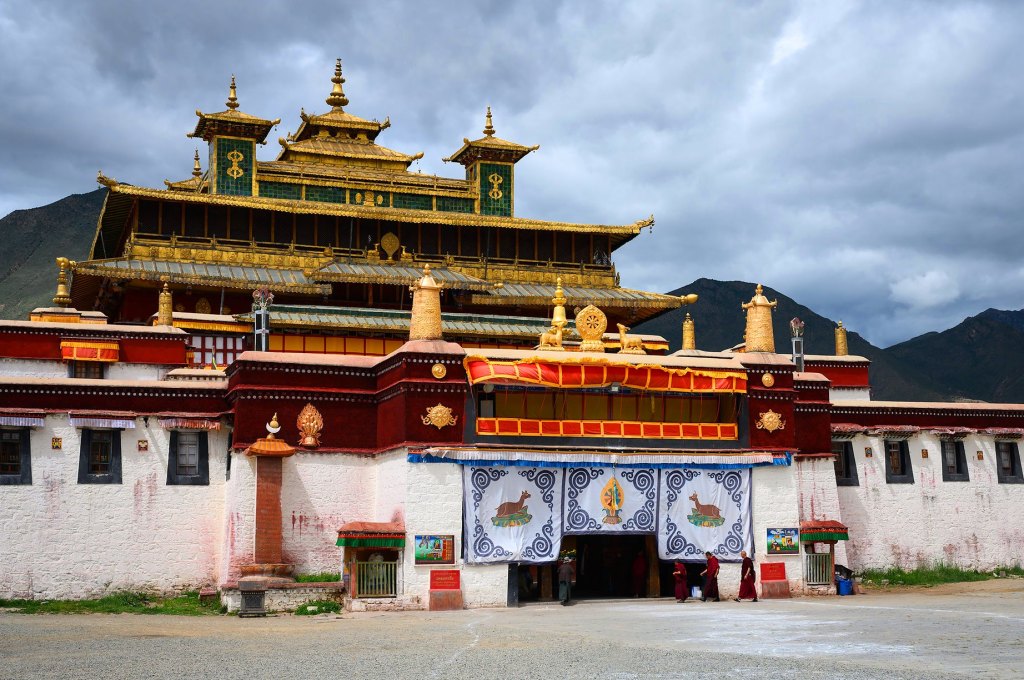
Samye Monastery was built in 762 when the great Tibetan emperor Trisong Detsen ruled Tibet. With the basic terms of Buddhism – Buddha, scriptures and monks, it is the first official Buddhist monastery in Tibet. For over 1,200 years of history, it is one of most influential monastery in Tibet. In this monastery, there was a famous debating about Buddhism between the ancient Indian Buddhism and Chinese Buddhism. Sitting on the north facing southward, and covers more than 25,000 square meters with a shape of a big oval, this monastery was built according to the description of universe in Buddhism scriptures. Being famous for its featured architectural structure which combines features of Tibetan, Chinese and Indian, Samye Monastery symbolizes the center of the universe for tourists to explore the ancient heart of Tibetan Buddhist world.
Rongbuk Monastery – The highest monastery in the world
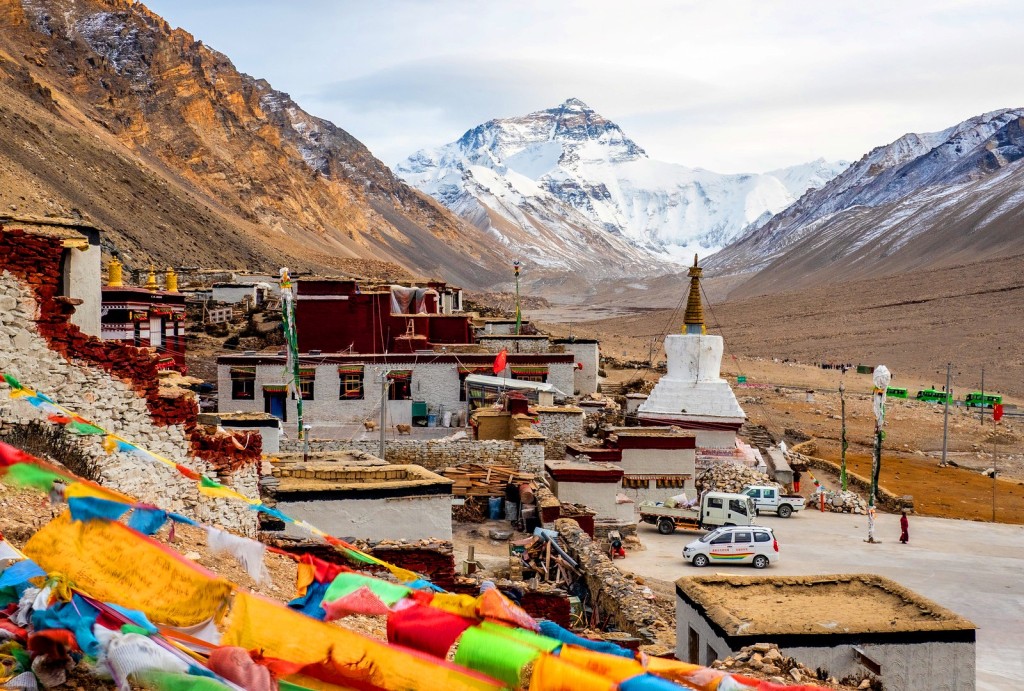
Rongbuk Monastery is the highest temple in the world above sea level, with an altitude of about 4980 meters. Situated in the north side of Mt. Everest, it is a perfect site to view the highest Everest and stay overnight before head to the Everest Base Camp (EBC) with 8 km away. Endowing the ideal location, Rongbuk Monastery itself is also worth visit. As one of the Nyingmapa Sect monastery built in 1899, it houses both monks and nuns here, which is quite special and different from other temples. Only several buildings remains, Rongbuk is simply and has a sense of untouched beauty not only for its quietness, but also the experienced history as a temple to witness the first person to conquer the Mount Everest. Acted as a rest site for climbers once upon a time, now it also does a favor for tourists to visit around before get to EBC.
Reting Monastery – Seat of Reting Rinpoche
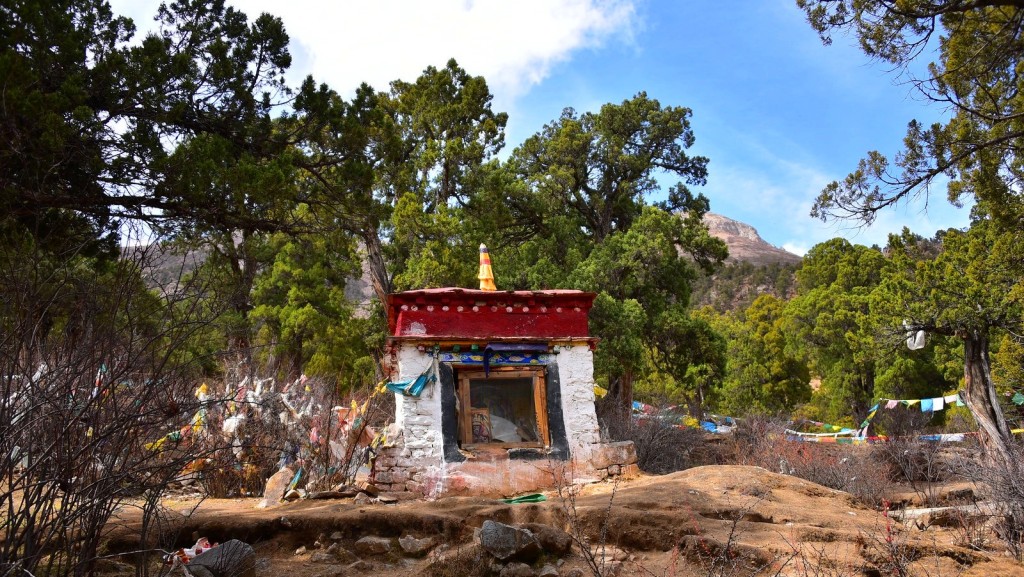
Reting Monastery is about 150 km from Lhasa. Reting Monastery, at an elevation of 4,150m, is the seat of the Reting Rinpoche: this lineage started in the eighteenth century when the seventh Dalai Lama appointed his tutor as abbot of Reting. The monastery dates back to 1056. It was initially associated with Atisha but in its later years it had an important connection with the Gulugpa order and the Dalai Lamas. Reting Monastery is 25 km from the crossroads settlement of Phongdo, which has a ruined dzong and is overlooked by a mountain of near-perfect conical proportions. There are a handful of shops and restaurants here.
The current main assembly hall, or Tsogchen, is half its original size. Enter the hall to the right to get to the main inner shrine, the Utse (women not allowed). The central statue of Jampai Dorje is an unusual amalgam of the gods Jampelyang, Chana Dorje and Chenresig.
To the left is an ancient Thangka of Drolma that, accoeding to the resident monks, was brought here by Atisha himself. A wooden box beside the altar holds the giant molar of Sangye Wosong, the Buddha before Sakyamuni. To the left of the Utse is a rare mural of the fourteenth Dalai Lama. To the right of the entrance is a picture of the current Reting Rinpoche. In front of the entrance is a platform used for creating sand mandalas. Behind the Utse is a storeroom stuffed with Tantric drums and Buddha statues. As you leave the chapel look for a second hall to your right. The hall contains a gold chorten with the remains of the sixth Reting Rinpoche. Lining the back wall are statues of all 6 previous Reting Rinpoches. The metal box in the right cornr holds a giant Thangka, unveiled once a year.

